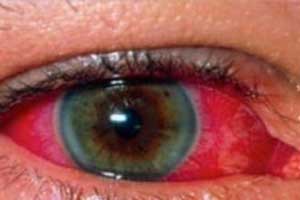- Home
- Editorial
- News
- Practice Guidelines
- Anesthesiology Guidelines
- Cancer Guidelines
- Cardiac Sciences Guidelines
- Critical Care Guidelines
- Dentistry Guidelines
- Dermatology Guidelines
- Diabetes and Endo Guidelines
- Diagnostics Guidelines
- ENT Guidelines
- Featured Practice Guidelines
- Gastroenterology Guidelines
- Geriatrics Guidelines
- Medicine Guidelines
- Nephrology Guidelines
- Neurosciences Guidelines
- Obs and Gynae Guidelines
- Ophthalmology Guidelines
- Orthopaedics Guidelines
- Paediatrics Guidelines
- Psychiatry Guidelines
- Pulmonology Guidelines
- Radiology Guidelines
- Surgery Guidelines
- Urology Guidelines
Uveitis treatment: Single intravitreal insert reduces recurrence provides for 3 years

Delhi: A single intravitreal injection of the fluocinolone acetonide intravitreal insert (FAi) reduced the recurrence of non-infectious posterior segment uveitis for 3 years, according to a recent study.
The study, presented at the 2019 American Society of Retina Specialists Annual Meeting in Chicago, IL, found that in patients with non-infectious uveitis affecting the posterior segment of the eye, treatment with a single intravitreal injection of the FAi provided anti-inflammatory treatment for 3 years.
Noninfectious Uveitis is a serious, sight-threatening intraocular inflammatory condition characterized by inflammation of the uvea, the pigmented layer that lies between the inner retina and the outer fibrous layer composed of the sclera and cornea.
Quan Dong Nguyen, professor of ophthalmology at Stanford University Medical Center, and colleagues determined the 36-month safety and efficacy of a single failure for treatment of non-infectious uveitis affecting the posterior segment of the eye.
Also Read: Vitamin D may prevent relapse of Uveitis, finds study
For the purpose, the researchers conducted a controlled, prospective, double-masked trial. The trial enrolled 129 patients from across 33 sites in the US, Europe, Israel, and India. A 2:1 block randomization based on therapy, to receive FAi (87) or sham injection (42).
To be included, patients needed to have experienced at least 2 separate recurrences of non-infectious uveitis affecting the posterior segment of the eye requiring 3 or more months of systemic therapy or 2 or more intraocular or periocular steroid injections and with a history of the disease lasting 1 year or longer. The primary efficacy endpoint of the study was non-infectious uveitis affecting the posterior segment of the eye occurrence.
Investigators noted multiple secondary efficacy endpoints within their study. Secondary endpoints included visual acuity and macular thickness/edema. The safety endpoints were rates of adverse events, including the incidence of cataract and elevated intraocular pressure.
Also Read: Yutiq now available for Chronic posterior segment Uveitis
Key findings:
- The overall rate of recurrence during the study period in FAi treated eyes (56.3%) was significantly lower than the rate in eyes randomized to sham injection (92.9%).
- Visual acuity improvements of 3 or more lines were more common among the FAi treatment group (33% versus 15%).
- Visual acuity loss was more common among patients in the sham group (9% versus 1% sham) at the final study visit.
- In eyes with baseline macular edema, 34 of 40 (85%) patients achieved resolution at month 36 when treated with FAi compared to 16 of 23 (70%) patients in the sham group.
- In regard to safety, 42% of FAi and 33% of sham patients required IOP lowering medications. Investigators also noted that 6% of patients in the FAi group and 12% of patients in the sham group required IOP lowering surgery.
- Cataract surgery was performed on 74% of phakic study eyes in the FAi group and on 24% of phakic eyes in the sham group.

Disclaimer: This site is primarily intended for healthcare professionals. Any content/information on this website does not replace the advice of medical and/or health professionals and should not be construed as medical/diagnostic advice/endorsement or prescription. Use of this site is subject to our terms of use, privacy policy, advertisement policy. © 2020 Minerva Medical Treatment Pvt Ltd